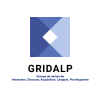Didactic sequences and insertion into primary school’s curriculum
Project management
Laurent Gajo, UNIGE
Team
Gabriela Steffen, Ivana Vuksanović, Audrey Freytag (UNIGE)
Duration
08.2016 - 12.2019
Keywords
Didactics,
Teaching
Description
This project aims at documenting and discussing the conditions for implementing bilingual teaching at primary school level based on two main issues:
- What are the specific didactic components for bilingual teaching in primary school, bearing in mind that the boundaries between subjects are flexible but that learning a first foreign language usually starts in HarmoS grade 5?
- What is the minimum requirement in a bilingual education? Are we facing a quantitative problem (a certain amount of time spent in L2) or a qualitative issue (a specific vision of the curriculum)?
Purpose – Expected results
Interview with Gabriela Steffen
In terms of results, this project aims to produce two types of data:
- Research data: extracts and collection of phenomena and sequences illustrating different working methods between language and subject/content in various institutional and curriculum contexts. This type of data will promote a scientific debate through communications and publications in Switzerland as well as internationally.
- Data for educational material and teacher training:
- Didactic sequence models in the form of video clips with subtitles in combination with various teaching media (books, newspaper articles, diagrams, etc.) and possible pupils’ written productions.
- Model procedures to implement bilingual teaching into the curriculum (module, sequence, block, half day; integration into the language or the subject programme; language distribution among teachers etc.).
This type of data will provide input for reflection based on a wide choice and variety of actual practices. Presented in the form of a digital directory, it should be useful for teachers, their instructors and institutional executives. To access the sequences, click here and an interview with Gabriela Steffen can be found here.


